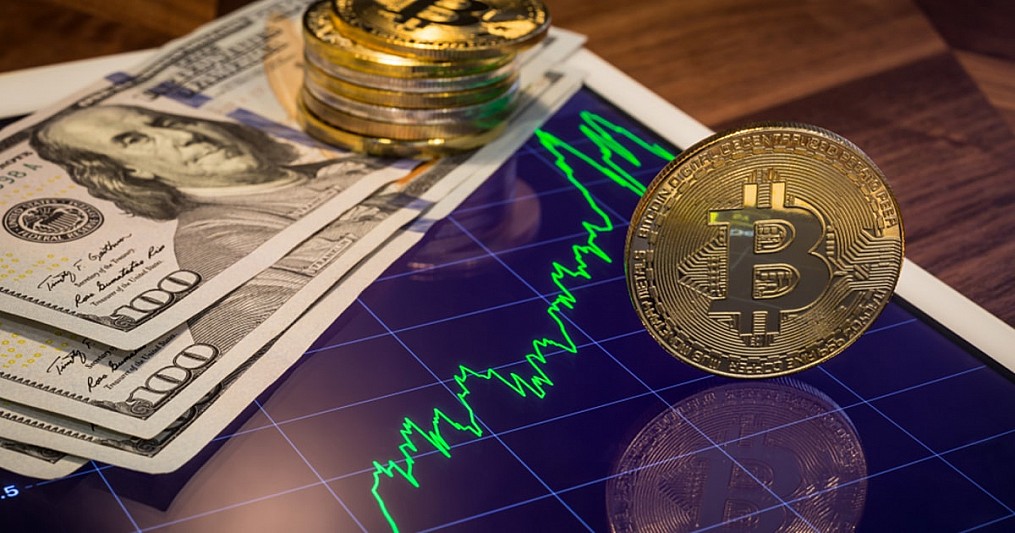Bitcoin (BTC) Above $30,000: Is This Level Sustainable

Bitcoin (BTC) has moved to a new range, trading around the $30,000 mark. BTC rallied above $30,150 late on Thursday, after spending the day around $29,600.
Ahead of the weekend, BTC traded at $30,152.40. For bullish analysts, the rally is an attempt to regain higher tiers above $32,000.
During the current market panic, the rally may also look like a bull trap before the still-possible dip to a lower price range. BTC also reached its usual daily trading volume around $33B in 24 hours.
BTC also enters the closing stretch for May, setting up the pace for the summer months. End-of-month trading may become even more volatile, with futures positions attacked before the closing of the monthly contracts.
Despite the overall bearish expectations, there are still possibilities for BTC to revisit new highs with a rapid rally. The breakout is expected after BTC once again moves to extend the streak of weekly net losses. A further drop under $27,000 is considered a risk that may trigger a more rapid price drop.
The Bitcoin Fear and Greed Index is down one point for the day, to 13 points, still bouncing off the extreme fear level of 8 points at the beginning of the week. The levels of extreme fear usually mark local bottoms for BTC, but this time, analysts are in no rush to call the trend reversal.
BTC Market Dominance Grows
Despite the stagnant BTC price, the market cap dominance of the leading coin touched 45%. The weight of smaller assets diminishes much more rapidly.
Ethereum (ETH) dominance is down to 19%, with ETH hovering just above $2,000.
An indicator of interest in altcoins, Dogecoin (DOGE) stepped back to $0.08 from its previous stability level around $0.12. Previously hot altcoins stepped back to a lower tier, over the effects of the Terra (LUNA) crash.
Even in the case of a bear market, BTC will be considered a more liquid and technologically secure asset. One of the reasons for skepticism about altcoins is the delay in ETH 2.0, as well as a recent admission by Vitalik Buterin that the network did not find a scaling solution as previously envisioned.
Solana, the other major network hosting NFT, games and decentralized finance, also had technological problems. The Solana network stopped working after losing consensus on too many transactions, raising fears the event may be repeated. A working Solana network is key to multiple decentralized processes and smart contracts, potentially leading to a loss of confidence.
DeFi was also a source of multiple exploits and losses in the past year, mostly by attacks on bridges. Those smart contracts, containing funds as collateral, are usually attacked as a source of idle tokens. One of the biggest attacks, for the Ronin-Ethereum bridge, took away above $620M equivalent, with the funds being mixed and sold on exchanges. Binance managed to intercept and return only $5.8M from that sum.
Terra Reaches Consensus to Restart LUNA
The voting on Terra LFG reached a consensus to restart the network and launch LUNA 2.0. The vote happened at a time when Terra USD (UST) fell under $0.08.
The general consensus is that Terra and LUNA can continue as a Layer 1 network, without the need for UST as a DeFi component. The LUNA network would work just like other Layer 1 solutions with delegated proof of stake, offering a venue to build distributed apps.
However, the chief attractor of LUNA – the ability to raise value almost out of thin air, may be lost due to the broken reputation of the project. Recent news of Pantera Capital selling its LUNA stash just days before the crash further raise doubts about the project.
Terra LFG will also be investigated by a South Korean financial crime task force, used in the case of significant market frauds.
Tether Keeps Claiming Stability
Another question raised by the current bear market is the potential stability of Tether (USDT). The token’s supply is down to 74.2B, with a nominal price of $0.99.
Over the years, Tether is reforming its asset mix, increasing the weight of US government bonds. Previously, Tether was accused of backing its tokens with volatile crypto assets, which were then switched to risky commercial paper.
The latest report shows Tether is attempting to move to more liquid and stable resources, increasing its ability for redeeming funds. USDT remains more stable compared to algorithmic stablecoins losing their peg.
The stability of USDT may work to calm the markets. USDT kept its trading volumes above $60B in 24 hours, still working as the most significant carrier of liquidity in crypto space.
Additionally, in the past month, the TRON-based stablecoin USDD raised its supply from zero to 333M tokens, with a trend to continue adding assets.

Uphold makes buying crypto with popular currencies like USD, EUR and GBP very simple with its convenient options to swap between crypto, fiat, equities, and precious metals.

With over 50 coins and an obsession with security, Kraken is one of the safest places to buy and trade crypto.

Kraken has a good reputation for security and protection of your funds and operates across the USA (except NY), Canada, the EU and Japan

Based in Charleston, South Carolina. Serves over 184 countries and has done over $4 billion in transactions. Offers convenient options to swap between crypto, fiat, equities, and precious metals.

What is bitcoin? Who controls it? Where can I buy it? Your questions answered!

Crypto investment remains unpredictable and risky, but good practices can save you from many of the potential pitfalls.

The first cryptocurrency. It has limitations for transactions but it is still the most popular being secure, trusted and independent from banks and governments.

The leader in programmable money, smart contracts and decentralised applications. There have been many copycats but none have the community and level of adoption.